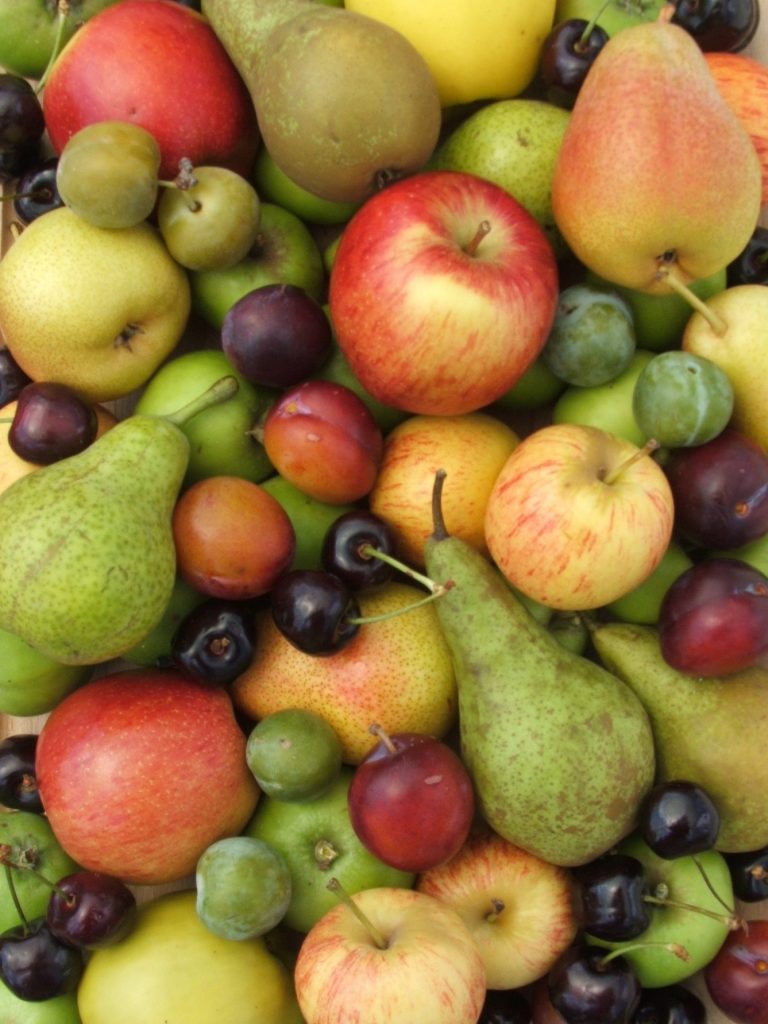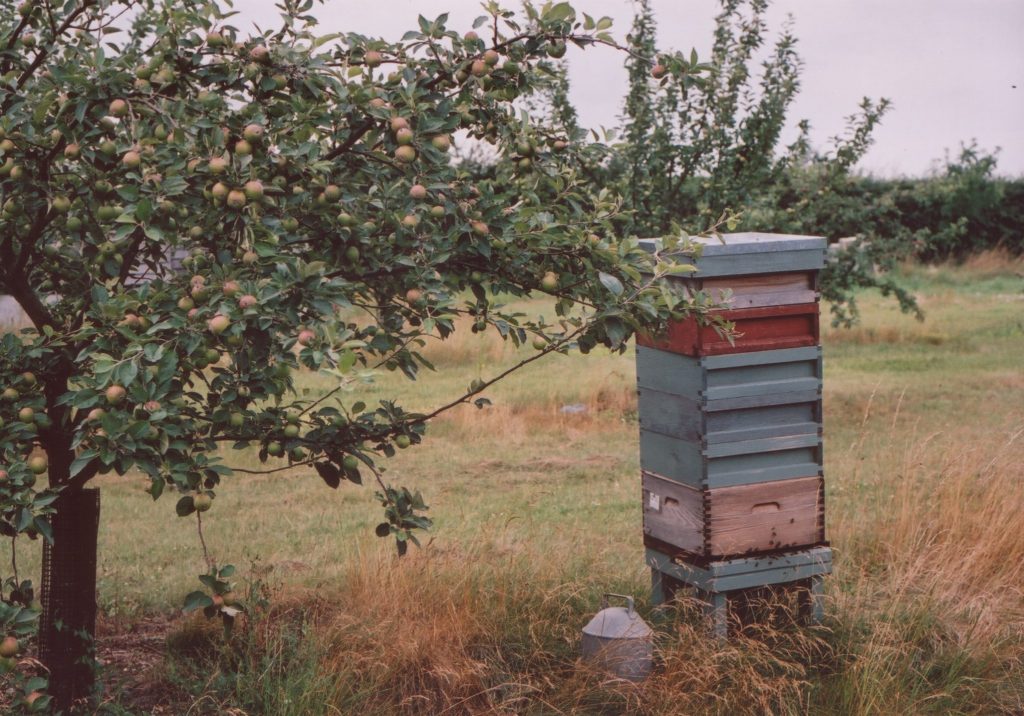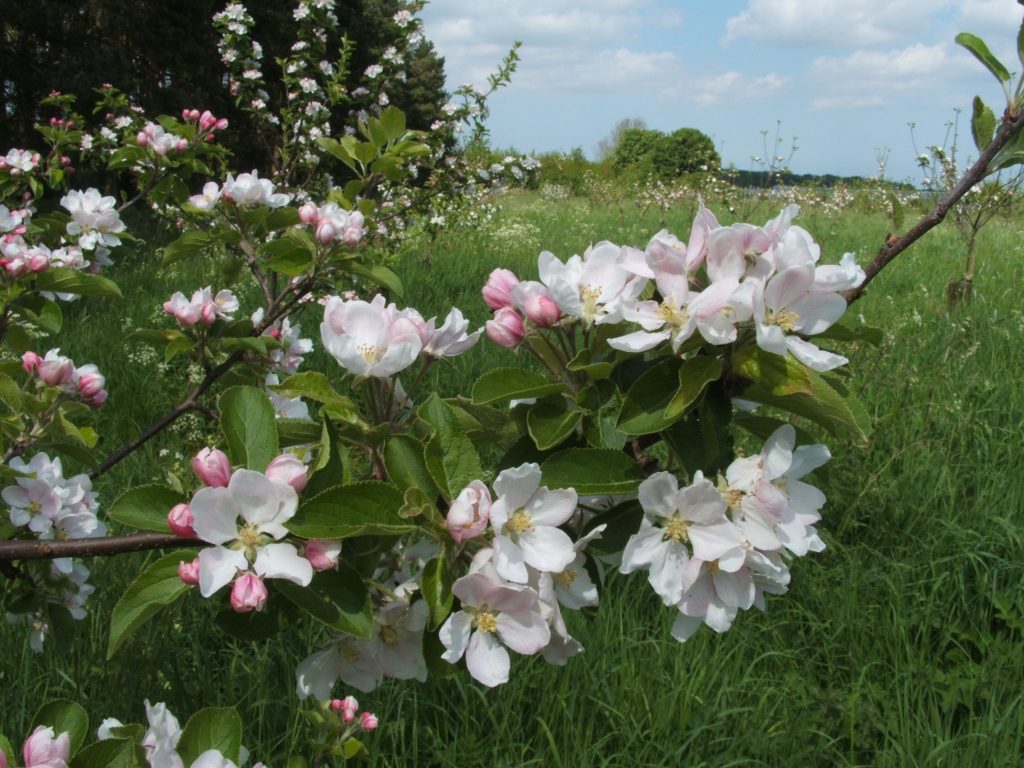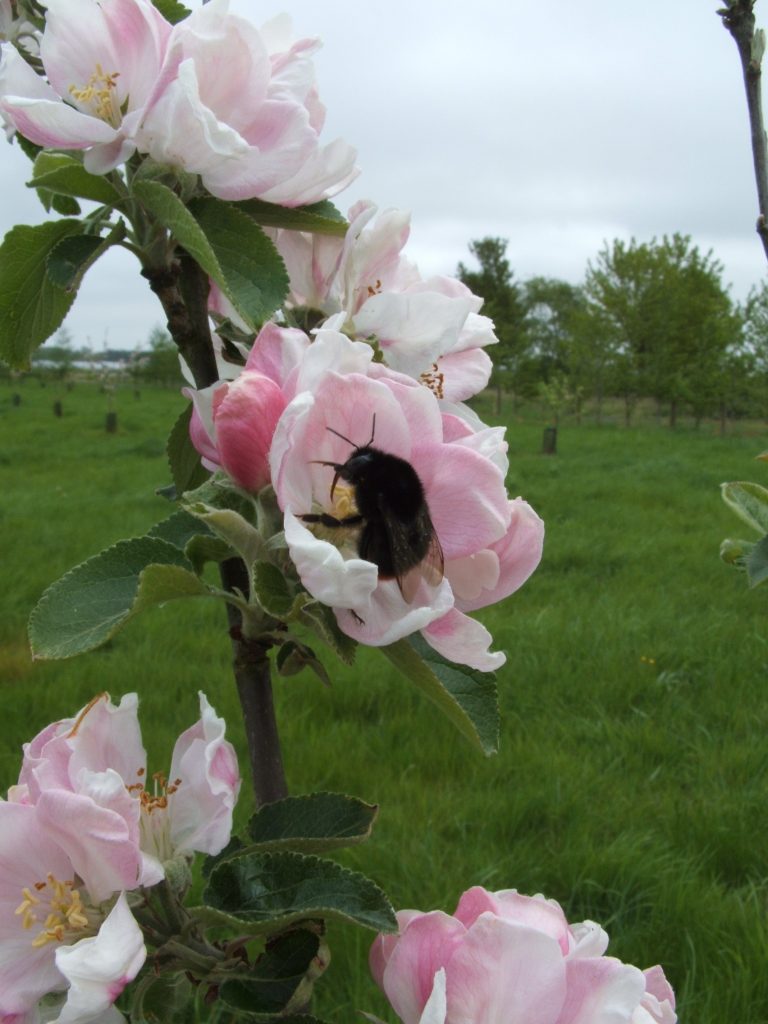When we started beepalace, one of the statistics that we found truly mind-boggling was that it can take around 20,000 honey bees to pollinate an acre of apple orchard but just 250 solitary bees. Isn’t that amazing?
Just last week we learned that in addition to this, in 2.2 hectares of a traditional orchard in Worcestershire, 1,800 species were found spanning the plant, fungi and animal kingdoms. Now, that’s biodiversity at work.
With the apple blossom now truly out – and the bees with it – we thought we’d find out a little more about traditional apple orchards and so we contacted Clare Stimson, a trustee and director of The East England Apples & Orchards Project, based in Norfolk, to find out a little more.
Clare, can you tell us a bit more about the project and what you do there?
Well, it was founded 14 years ago and actually originated in a Norfolk project, which was looking at the future of local apple varieties.
When we started there was an elderly man who for many years had been studying lost, local varieties at Gressenhall [Museum of Rural Life] in their orchard. He’d been doing all this research and visiting country houses and estates across the county collecting material, so that was a great starting off point.
Initially it was about identifying apples and researching lost varieties then we started doing orchard surveys and training in orchard skills and then we started selling the trees largely because there was a local nursery which had been selling local varieties and it was closing and they offered us their last year’s stock of local varieties. It was all carefully planned and thought out, as you can tell…!
Haha! Maybe serendipitous?! Having the trees to sell must be brilliant for those wanting local species, though…
Absolutely. We think it’s really important that heritage isn’t exclusive and doesn’t just sit in collections, but is accessible to everyone. That’s one of the reasons we wanted to sell the trees: we realized pretty quickly that you can get people excited about a subject, but if they can’t do anything about it – if they can’t buy the tree – then you’ve lost a massive opportunity to nurture that enthusiasm.
Some of varieties aren’t available anywhere else: the National Fruit Collection doesn’t hold them, so we’re pleased to be able to put them into circulation again.
You do a lot of work on education as well – why are orchards so important?
Obviously the habitat side is really important, because orchards are absolutely brilliant for wildlife, as you said. This is partly because they age quite rapidly: in an ancient woodland one of the most important habitats is the old wood, which is dying and decaying. This is a very important habitat for insects and various birds, but the miraculous thing is that with fruit trees, you reach that stage a lot earlier and so you can have a full range of habitats age-wise quite quickly.
Then, of course, there’s the blossom, which is so important to the bees (and the bees, which in turn are so important for the blossom). If you’ve got a mixed orchard you can provide pollen for bees for quite a long season and if you underplant your trees with wildflowers, that season can extend even further.
It’s really not a surprise that there’s such a long tradition of beekeepers putting their hives into the orchards for the Spring.
What if you don’t have the space for an orchard?
Well, even if there’s not enough room for a fruit tree, all’s not lost because you can train them. Formal training goes back to Tudor times at least and you can grow fruit in an incredibly small space. You don’t get the same volume of fruit off it as you might if you were growing it as a free standing tree, but you get plenty. You can grow them as diagonals on a wall or espaliers with the uprights and the cross branches – there are so many options, so there’s almost no space that’s too small, which I think is great.
Are any varieties suited to that more compact style of growing?
Well, plums don’t take too kindly to being trained in this way, but you can fan-train them. In terms of varieties, if you’re just growing the one, you’d need to make sure it’s a self-fertile variety (simply meaning it pollinates itself), but if you’ve got other fruit trees around in neighbouring gardens, then you don’t have to worry. If you don’t, there are numerous self-pollinating pears, plums and apples available, which are all quite good choices. You can actually train any kind of apple tree (despite the traditional thinking that you can only use spur bearers for formal training) so some of the old rules have gone out of the window now.
Obviously a big part of what you do is to with growing heritage varieties of fruit trees. How do these varieties come about?
It varies hugely. Varieties that have ‘seedling’ or ‘pippin’ in their name means that it’s a variety which has been grown and propagated from the pip because someone decided that that specific apple tasted good. Growing this way means that it’s always going to be a unique variety and Bramley seedling is probably the best known example of this. Others have been deliberately cross bred for whatever reason: the Laxton brothers, for example, worked extremely hard at their cross breeding with the aim of producing apples for every month of the year – and they pretty much managed it!
Every month of the year? That’s incredible!
There’s also a great tradition in Britain of the gardeners in the grand houses competing to breed new varieties of fruit and many have indeed come from the great halls, like Golden Noble, which was bred at the Hall in Stow Bardolph here in Norfolk.
Then you have varieties that are named after someone local: in Norfolk we have the Captain Palmer apple which was never sold commercially until we started selling it, but was known in the area of South Norfolk where it was bred and it was named after Captain Palmer, who was a local dignitary.
Are you discovering new varieties, or do you have a fairly robust catalogue at this point?
We have a lot of trees in our research plot that we’re growing on to see what they produce and to see if they match anything we currently hold on record. This is an ongoing process and I’d say we probably introduce one new variety a year, I would think.
That said, there are hundreds still to find. On our website we have lists of the lost ones that we’re still looking for and there are so many of them. People keep bringing fruit into us for identification at the various Apple Days, so we never know – we might get lucky!
Is that how you’re discovering them?
Yes – and we try to publicise the lists of what we’re looking for. It was after posting a list of ‘lost’ varieties that somebody in a garden in Lincolnshire contacted us to say that they had one of these varieties – and had done so for as long as they could remember. Perhaps it’s that you just assume that if something is familiar to you, it will be familiar more widely – they didn’t realise what a discovery it was and we were pleased to be able to put it back into production.
How exciting! It sounds like a kind of arboreal treasure hunt! Thanks so much for your time, Clare and best of luck with the project.
You’re welcome!
The East England Apples and Orchards Project covers the East Anglia region of the country. If you’re interested in tracking down local varieties where you live, contact the Orchard Network to get more information about what’s happening in your locale. There are lots of ways to support our pollinators: growing more flowers, planting an apple tree, and yes, putting up a beepalace doesn’t hurt either…!








